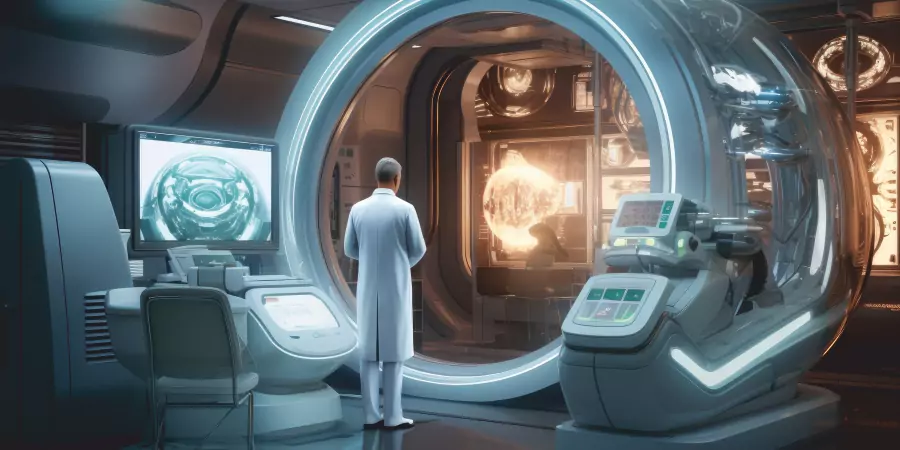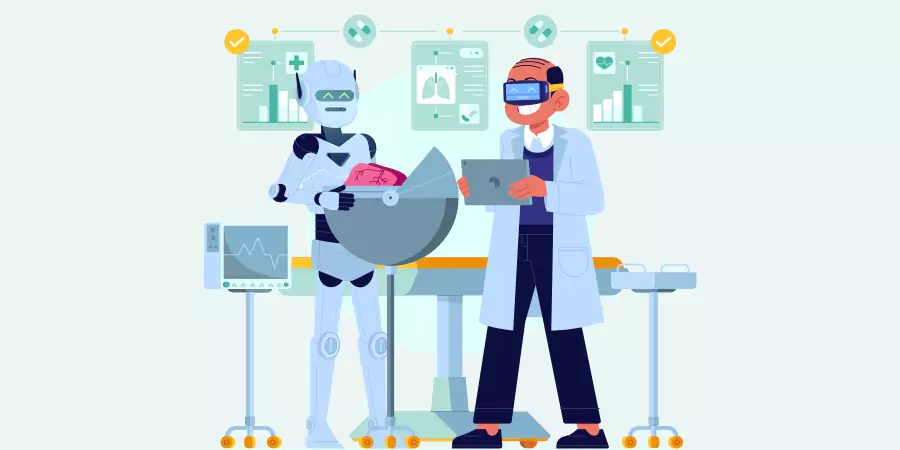The global healthcare landscape is evolving rapidly, and at the heart of this transformation lies the rise of smart hospitals and robotic systems. Far from being limited to simple automation, today’s smart healthcare environments integrate artificial intelligence (AI), autonomous robots, IoT-enabled devices, and predictive analytics to deliver high-quality, patient-centered care. Countries like South Korea, Japan, and the United Arab Emirates (UAE) are leading the way, showcasing how the fusion of robotics and digital health can redefine the future of medicine.
From Automation to Intelligence: The Smart Hospital Revolution
Smart hospitals represent the next generation of medical infrastructure. Unlike traditional automation that handles repetitive tasks, smart hospitals harness real-time data and machine learning algorithms to make autonomous decisions, adapt to patient needs, and improve outcomes. These high-tech facilities are powered by a network of interconnected devices, AI-driven diagnostics, and robotic assistance that enhances both clinical efficiency and patient satisfaction.
Autonomous Nursing Robots
One of the most significant breakthroughs in hospital robotics is the deployment of autonomous nursing robots. These robots are designed to support healthcare staff by performing non-critical, labor-intensive tasks such as:
- Delivering medications or meals
- Transporting medical equipment
- Assisting in patient mobility
- Disinfecting rooms using UV technology
In South Korea, Seoul National University Hospital has implemented a fleet of autonomous service robots to reduce nurse workload and improve response time during the COVID-19 pandemic. These robots navigate hospital corridors independently, using sensors and AI to avoid obstacles and interact with medical staff. The result is faster service delivery and more time for nurses to focus on critical patient care.
Smart Beds and Real-Time Monitoring
Smart beds are another key feature of advanced hospital systems. These beds are embedded with sensors that monitor patient vitals, movement, posture, and sleep patterns. They can automatically adjust to enhance patient comfort, prevent pressure ulcers, and alert staff in case of unusual activity or emergencies.
Hospitals in the UAE, such as the Sheikh Shakhbout Medical City in Abu Dhabi, are integrating smart beds into their infrastructure as part of a broader digital transformation. These intelligent beds are connected to central monitoring systems, enabling healthcare providers to receive real-time alerts and minimize delays in treatment decisions. They also contribute to better patient safety by reducing fall risks and improving early detection of health deterioration.
AI-Powered Triage and Decision Support
AI triage systems are transforming how patients are assessed and prioritized in emergency departments. By analyzing symptoms, medical history, and vital signs, these systems can determine the urgency of care and recommend the appropriate clinical pathway.
In Japan, hospitals like Fujita Health University Hospital have developed AI-based triage and diagnostic platforms. These tools analyze large datasets to provide real-time insights to emergency room physicians, helping them make faster, more accurate decisions. AI triage not only accelerates patient flow but also optimizes resource allocation during peak times or public health crises.
Case Studies: Global Leaders in Smart Hospital Innovation
South Korea: A Digital Health Powerhouse
South Korea has been at the forefront of healthcare technology adoption. The Samsung Medical Center in Seoul uses AI-powered robots to assist with logistics, diagnostics, and even emotional support for long-term care patients. The integration of digital records, telemedicine, and robotic surgery makes it one of the most advanced medical centers in Asia.
UAE: Building a Healthtech-Driven Future
The UAE’s vision for smart healthcare is evident in projects like the Dubai Health Authority’s Smart Hospital Initiative. Facilities are equipped with AI chatbots, facial recognition for patient identification, and robotic pharmacy systems that automate prescription handling. These innovations enhance efficiency and provide a seamless, paperless experience for patients.
Japan: Robotics and Aging Population
With an aging population and a shrinking workforce, Japan has turned to robotics to meet healthcare demands. Hospitals use humanoid robots like Pepper to assist patients with mobility, provide companionship, and support administrative tasks. In surgical settings, robotic systems such as da Vinci are used extensively for minimally invasive procedures, boosting precision and recovery times.
Conclusion
The future of healthcare is not just automated—it’s intelligent, responsive, and deeply integrated with robotics and AI. Smart hospitals around the world are moving beyond routine automation to embrace innovations that actively enhance clinical care and patient well-being. From autonomous nursing robots in South Korea to AI triage systems in Japan and smart beds in the UAE, these technologies are setting new benchmarks in healthcare delivery.
As digital ecosystems mature and robotics become more sophisticated, smart hospitals will become the standard rather than the exception—ushering in an era where machines and medical professionals work side by side to deliver faster, safer, and more personalized care.





